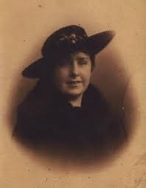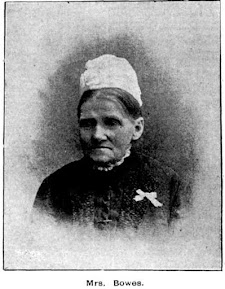A Forgotten Female Artist - Florence Ada Fuller
A newspaper article caught my attention regarding the subject of my first post on the "Rookwood Cemetery Discoveries" blog.
Armed with relevant information I went forth to find the illustrious resting place for the famous (at the time) female Impressionist artist, Florence Ada Fuller.
What I found was an unmarked grave in an area of many, nearby the Greek St Anthansios Chapel. To say I was a little shocked is putting it mildly but as experience has shown me, many an exceptionally talented person lies in such a resting place.
During the final days of Women's History Month let me appraise you of Florence's life and achievements.
Florence was born in Port Elizabeth South Africa in 1867 and migrated as a child with her family to Melbourne. Florence showed exceptional artistic talents and trained under Jane Sutherland, a member of the Heidelberg school and one of the better known Australian female Impressionist painters of the era. In 1883 at the age of 16 she was enrolled to study painting and drawing at Melbourne's National Gallery School.
She received further tutelage from her uncle Robert Hawker Dowling, who at the time was one of Melbourne's leading portrait artists, and juggled lessons with the role of a governess. By 1886, Florence had become a professional artist opening her own studio, painting portraits and landscapes.
Her uncle died that same year whilst in the midst
of painting a portrait of Sir Henry Loch's wife and Florence was invited to
complete it. The final result was well received and she found herself with
a wealthy patron.
Florence won a prize for the best portrait painted by an artist under 25 at the first exhibition of the Victorian Artists Society in 1889. She exhibited regularly with art societies in Melbourne and received many sales and commissions which allowed her to make a living as an artist, rare for women then.
In 1888, Fuller completed a pair of realism paintings featuring poverty. They were entitled "Weary" and "Desolate" and both featured child poverty against the backdrop of a ship berthed at the docks in Melbourne. "Weary" was recently hung in the Art Gallery of NSW and is expected to be once more upon the current renovations being completed later this year.
In 1892 Florence left Australia, accompanied by her sister Christie to recover from an illness. She first went to South Africa, where she met and painted for Cecil Rhodes, and then on to Europe. Florence lived and studied there for the subsequent decade, except for a return to South Africa in 1899 to paint a portrait of Rhodes. Between 1895 and 1904 her works were exhibited at the Paris Salon and London's Royal Academy.
In 1904, Florence returned to Australia, living in
Perth. She became active in the Theosophical Society and painted some of her best-known
work, including "A Golden Hour", described by the National Gallery of
Australia as a "..masterpiece" when it acquired the work in 2013
paying over $88k for it.
Fuller’s time was taken up by the local branch of
the Society variously holding the positions of
Secretary, Treasurer, and Librarian.
She went on to paint many portraits of the leaders of the Theosophical
Society. In 1908, Annie Besant, the then President of the Society, toured Australia and met Florence inviting her to the compound in Adyar India where she painted many of the members. In 1911, Florence travelled to
London and spent three years there earning a living painting portraits.
Highly regarded during her active career as a portrait and landscape painter, by 1914 Florence was represented in four public galleries—three in Australia and one in South Africa—a record for a woman who was an Australian painter at that time.
Florence returned to NSW in 1916 and settled in Mosman where she mainly painted miniatures.
In 1920, the Society of Women Painters in New South Wales established a School of Fine and Applied Arts, with Florence Fuller appointed as the inaugural teacher of life classes.
Fuller began to suffer from mental illness, which
deteriorated over time and in 1927 she began almost twenty years of
institutionalization in Gladesville Mental Asylum where she died in 1946; her
death virtually went without notice. After she died, information about her was
frequently omitted from reference books about Australian painters and knowledge
of her work became obscure despite her paintings being held in public art
collections including the Art Gallery of South Australia, the Art Gallery of
Western Australia, the National Gallery of Australia, the National Gallery of
Victoria, the Art Gallery of New South Wales and Australia's National Portrait
Gallery.
Florence Ada Fuller died on 18 July 1946 and was buried later that day. Her resting place is in the Salvation Army area of the Independent section of the Cemetery
A sad postscript to a life of artistic ability all but forgotten. RIP.
Ref:- mydailyartdisplay.wordpress; with thanks for photograph of Florence; artsearch.nga.gov.au; ArtGallery of NSW; Image of "A Golden Hour: from NGA collection; Wikipaedia; photo of "Weary" my own.






Congratulations on your first blog post! Very well written and so interesting.
ReplyDeletethanks Laurie - early days and a few tweaks required.. Wish me luck
Delete